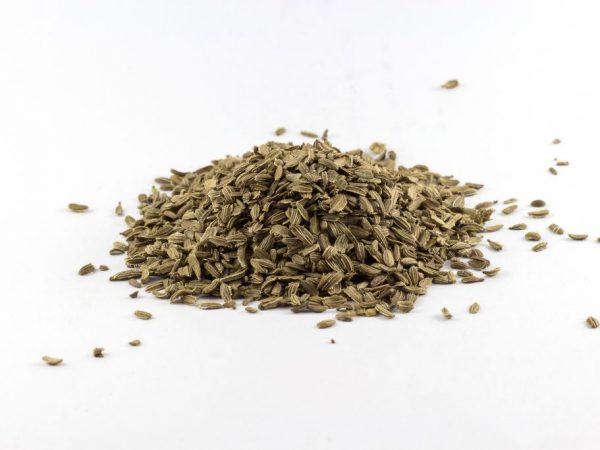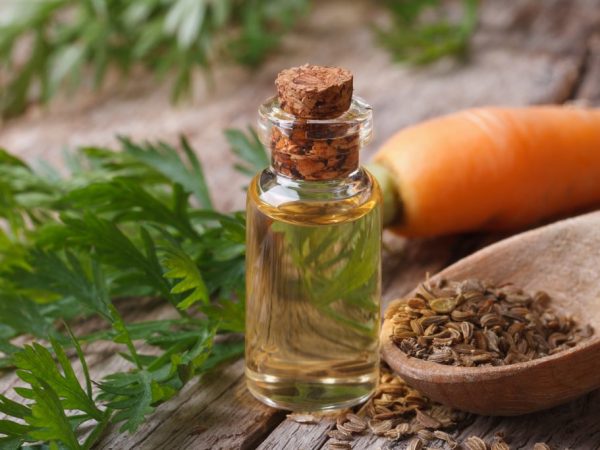Features of sowing carrots
Sowing carrot belongs to herbaceous plants and is a subspecies of wild.

Features of sowing carrots
Botanical characteristic
The seed carrot is a herbaceous biennial plant that grows up to 1 m in height and has a life cycle of 12 to 24 months. She belongs to the umbrella family. She has leaves dissected in 2-4 places, complex-pinnate, can be pubescent. In the first year of life, the plants are collected in a rosette, in the second year they open on expanded short petioles.
Inflorescences are formed in the form of a complex umbrella, consisting of 10-15 rough-pubescent rays. Flowers are formed from white, reddish or yellowish petals in the form of a calyx with small teeth. The center of the umbellate inflorescence is occupied by a dark red flower. The fruits of inflorescences of sowing carrots are small in size, elliptical in shape, presented in the form of two-seedlings 3-5 mm long. Ripening period - August-September.
In everyday life, the concept of carrots means a root crop of the sown variety.
The pivotal root system is well-formed, has a rapid development, is capable of rooting to a depth of 1.5-2 m. The main fusiform root-root vegetable is fleshy, usually located in the soil at a depth of 0.6 m. The mass of root crops varies between 30-200 g, in rare cases, a little more. The average length is 3-30 cm. It has two layers:
- external - in the form of a bark, covered with a thin peel, has a tasty pulp, is colored more intensely;
- the inner one is like a wood rod, has a more rigid structure and less bright color.
Growing areas and yield
Presumably, the seed variety began to be grown in Afghanistan through selection from the wild. Currently, the vegetable crop is widespread in almost all countries. The exceptions are regions with hot subtropical and tropical climatic conditions. Carrots come in many varieties and are among the economically important vegetables in the world.
Among the main suppliers in terms of world production are noted:
- China - 45.5%,
- Russia - 4.9%,
- America - 3.76%,
- Uzbekistan - 3.4%,
- Poland - 2.5%,
- Ukraine - 2.4%.
The yield is about 20-80 tons per hectare, which is comparable to the yield of potatoes.
Chemical composition and pharmacological properties

Carrots are very healthy
The constituent elements of the vegetable crop provide the health benefits of the vegetable.
Chemical composition
The root crops of sown carrots include:
- carotenoids, including carotenes of groups α-, β-, γ-, phytofluene and phytoene,
- vitamin B group, including B1, B2, B6,
- carbohydrates - glucose, fructose, sucrose,
- essential oil,
- sterols,
- mineral salts,
- phospholipids.
Carrot seeds contain essential and fatty oils with limonene, cymene, pinene, dipentene and geraniol, as well as flavonoids.
100 g of product contains:
1. vitamins
- 1 mg PP,
- 12 mg beta carotene
- 2000 mcg vitamin A,
- 0.06 mg thiamine
- 0.07 mg riboflavin,
- 0.3 mg pantothenic acid
- 0.1 mg pyridoxine
- 9 mcg folic acid
- 5 mg ascorbic acid
- 0.04 mg vitamin E
- 1.1 mg niacin equivalent PP,
- 0.06 mcg biotin,
- 13.3 mcg phylloquinone.
2. Macronutrients
- 200 mg potassium
- 63mg chlorine
- 55 mg phosphorus
- 38mg magnesium
- 27 mg calcium
- 21 mg sodium
- 6 mg sulfur.
3. Microelements
- 0.7 mg iron
- 0.4 mg zinc
- 0.2 mg manganese
- 326 mcg aluminum
- 200 mcg boron
- 99 mcg vanadium
- 80 mcg copper
- 55 mcg fluoride
- 20 mcg molybdenum
- 6 mcg lithium
- 6 mcg nickel
- 5 mcg iodine
- 3 mcg chromium
- 2 mcg cobalt
- 0.1 mcg selenium.
The calorie content of sown carrots is 35 kcal and includes:
- 88 g water
- 6.9 g carbohydrates
- 6.7 g of mono - and disaccharides,
- 5 g of organic acids,
- 2.4 g dietary fiber
- 1 g ash
- 1.3 g protein
- 0.2 g starch
- 0.1 g fat.
Pharmacological properties
Sowing carrots are known for their health benefits:
- antiseptic,
- anti-inflammatory,
- diuretic,
- choleretic
- laxative
- vasodilator,
- antispasmodic,
- pain relievers
- anthelmintic,
- antidepressant.
Applications
The vegetative parts of the sown carrot are widely used in cooking and pharmacology.
Cooking
Root crops of the cultivated variety of wild carrots are used as spices for the preparation of first and second courses, they are used raw and boiled, they act as an ingredient in conservation, pickling. Juice is made from vegetables and carotene is obtained.
The medicine
The medicinal properties of sowing carrots are widely used in the treatment of diseases and disorders in the general state of health:
- In terms of the amount of carotene contained in carrot roots, the vegetable is second only to sweet bell peppers, therefore it is often included in the diet of people with vitamin deficiency and hypovitaminosis. Regular consumption of vegetables stimulates redox processes in cells and normalizes carbohydrate metabolism.
- Vegetables in grated form and in the form of juices are indicated for the prevention of decreased visual acuity and with a decrease in the discharge of tear fluid.
- Vitamin A contained in the root vegetable of the seed carrot is essential for the treatment of malignant tumors.
- Decoctions of carrot seeds are recommended as an antispasmodic and vasodilator. They are also drunk with urolithiasis.
- The grated root vegetable is applied to wounds, ulcerative foci and burns to speed up the healing process.
- Freshly prepared carrot juice is an anthelmintic agent.
- In combination with milk, carrots are a good remedy for warming up the thoracic region with bronchitis.
Conclusion
Sowing carrots are a type of wild vegetable that is grown everywhere today and is among the economically important in many countries. Carrots have a composition rich in vitamins, macro- and microelements; they are used in cooking and medicinal medicine.


